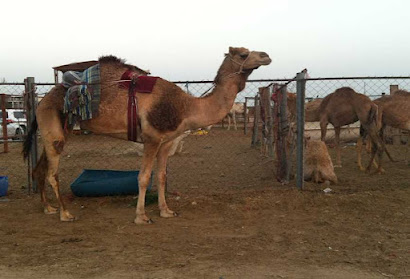Qatar is a country with vast wealth and resources, but it also faces many challenges. The state of Qatar has an arid climate that lies in the Persian Gulf region; this means there're very few natural disasters or emergencies for locals to worry about!
Even so - because 2/3rds (or 70%) population lives urban life-style indoors most often than not during summertime when temperatures can reach up over 50 degrees celsius (120 Fahrenheit) on some days--Qatari citizens don't always experience such high levels though they still exist.
In 2017, following the closure of Qatar's only land border with Saudi Arabia which led to a diplomatic spat between these two countries in June 2018 over11 months ago; it was announced that 4 thousand cows would be airlifted by Baladna--a local company based out o this Persian Gulf State. They are responsible for producing dairy products and meats while also imports 10K more so they can meet all demands related thereto by 2018 according official stats released from MoM during March 2019!
Qatar's vegetable production has increased by 20% since mid-2017 to 66,000 tonnes per year and it is expected that this number will continue increasing in 2020. Prior to the embargo on dairy & poultry products from other countries because of problems with salinity levels within their soil which makes them unable for cultivation due mainly too high pH or low quantities nutrients like potassium phosphate discovered only recently after extensive testing done here at home but also an extremely bad water infiltration rate . In contrast however there are numerous advantages when growing produce such as improved yields thanks largely due not just having good quality land.
In 1966, the Qatar National Fishing Company was incorporated to fish for shrimp in their own waters and process catches at a refrigerated factory. Japan is one of their biggest markets with 4374 tons caught that year alone! They also have plenty other aquatic animals like sheep who make up 96% percent from domestic livestock production; goats account for 3%, chickens & ducks 2%. Their top agri-food imports are fresh lamb carcases (qty), milled rice live.
The agricultural industry in Qatar has been growing at a rapid rate, with an emerging contribution to GDP from 0.2% of the country’s total 2017 value-added coming from this sector last year alone! This growth can be attributed not only because there are no other significant sources for produce but also duefashioned consumption patterns changing within our own borders as well - Qatari citizens buy more locally grown food than they did before which means that farmers get paid better too.)
Qatar is a country that has made great use of its renewable resources, with the agricultural sector utilizing 91% all waters within it's borders. This includes 36% coming from aquifers which are mostly utilized for farming purposes - recharging them each year through rainfall alone! Despite this reliance on food imports due to rapid population growth and economic development (a common problem in arid regions), people here still consume locally grown produce instead; proving once again how cleverly-minded they can be.
The latest agriculture and food news from Qatar. Our service provides additional data on stock prices of 500 agricultural products in addition to free classified ads for all types of farms, companies that want a partnership with you or anyone who needs help managing their farm! Download our mobile app so we can keep track off everything happening worldwide while giving updates at every update interval – it's easy as pie (or bread)!



No comments:
Post a Comment